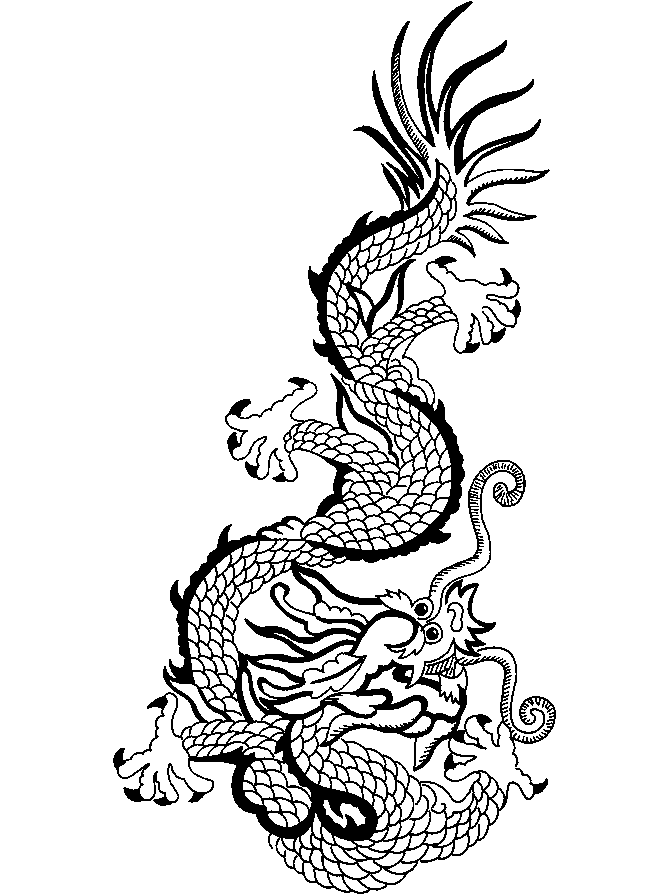
“Ngọc Hoàng Thượng Đế Kim Viết Cao Đài Giáo Đạo Nam Phương, Thầy các con, Thầy mừng các con nam nữ.
“Các con ơi! Sự đắc nhứt đối với người tu theo Đại Đạo của Thầy, là một then chốt quan trọng ở mục tiêu, vì mục tiêu là điểm rốt ráo. Nếu các con không nhìn nhận và nắm được lẽ Một ấy, cứ quanh quẩn bên ngoài, thì không bao giờ đến chỗ. Nếu không được Một, chẳng những các con cứ quanh quẩn bên ngoài vòng đạo lý, mà phải chịu trong sự vô minh nê chấp riêng rẽ ở quan niệm cá nhân hay đoàn thể tông phái của mình.” [1]
“GIÁO TÔNG ĐẠI ĐẠO THÁI BẠCH KIM TINH, Bần Đạo chào mừng chư hiền đệ hiền muội.
Lời xưa có nói: “Đắc nhất vạn sự tất” nghĩa là được một sẽ được tất cả. Một là chi? Một là Đạo.
Đạo bao gồm hàm súc cả quá khứ, hiện tại và vị lai của sự lý trong cõi đời. Thiếu Đạo là thiếu một. Một đã bỏ mất thì dầu có bao nhiêu cũng là mộng ảo, không cội, không nguồn.
Trên năm mươi năm dạy dỗ, thánh ngôn, thánh giáo rất nhiều chung qui cũng nhằm dạy lẽ Một đó mà thôi.” [6]
“Lấy cán cân chân chính mà đo lường sự việc, không thương riêng, không ghét riêng, xem tất cả là một, một là tất cả, thẳng đường tiến bước đến đạo, không ngã nghiêng, không chênh lệch. Chân lý tự nó sẽ chiếu sáng. [8]
“Sở dĩ Bần Đạo ban 10 điều huấn lịnh cho các cấp chức vụ Cơ Quan là vì Cơ Quan Phổ Thông Giáo Lý Đại Đạo thì – một là tất cả và tất cả là một – nên Cơ Quan không lập Văn Phòng chi nhánh, qui điều không áp dụng ngoài chức vụ Cơ Quan. Chức vụ không phải để so hàng cùng chi phái, mà là để lãnh lấy đặc trách chuyên viên, làm chất khằn gắn liền sự rạn nứt dễ vỡ, làm dòng nước luân lưu vào cõi lòng nóng bỏng khô khan.
“ Chư đệ có thấy chăng – sự thành công không phải là nhơn sanh chi phái về với chư đệ. Sự thống nhứt không phải tất cả đều gom về một vị trí nào đó, mà thành công hay thống nhứt bằng một lý đương nhiên khai triển giữa rừng âm u tàn bạo, giữa vật dục sở tế, giữa thời ly tán phân tranh, nên chi công cuộc phổ thông giáo lý phải đòi hỏi những đức tính kiên nhẫn, hi sinh và thủy chung như nhứt. Các đức tính ấy thiếu một thì công cuộc chưa thực hành trọn vẹn, giáo lý chưa phổ thông.” [9]

Theo đạo Hindu:
Unity of Existence : All things and beings are the manifestation of one Supreme Being. When the mind is transcendent [10] through spiritual experience, the Universal spirit is seen as the sole essence of the universe. (http://www.hindunet.org/quickintro/hindudharma/hindu_elements.htm)
Theo đạo Bahá’i
Did you know that the Bahá’í Faith speaks of three core assertions[11], sometimes termed the “three onenesses”: the unity of God, the unity of religion, and the unity of mankind?
In addition to these three onenesses the following principles are frequently listed as a quick summary of the Bahá’í teachings.
· Progressive revelation
· Equality of women and men
· Elimination of all forms of prejudice[12]
· World peace
· Harmony of religion and science
· Independent investigation[13] of truth
· The need for universal compulsory[14] education
· The need for a universal auxiliary language
· Obedience to government and non-involvement in politics
· Elimination of extremes of wealth and poverty
Theo Hội Thông Thiên Học:
The three objects
The three declared objects of the original Theosophical Society (Hội Thông thiên học) as established by Blavatsky, Judge and Olcott were as follows:
- First — To form a nucleus of the Universal Brotherhood of Humanity[15], without distinction of race, creed, sex, caste or colour.
- Second — To encourage the study of Comparative Religion, Philosophy and Science.
- Third — To investigate the unexplained laws of Nature and the powers latent in man.”
Theo Swami Vivekananda (phái Advaita Vedanta)
Swami Vivekananda (Bengali: স্বামী বিবেকানন্দ, Shami Bibekānondo; Sanskrit:स्वामी विवेकानन्द, Svāmi Vivekānanda) (January 12, 1863–July 4, 1902), born Narendranath Dutta [2] is the chief disciple of the 19th century mysticRamakrishna and the founder of Ramakrishna Mission
Vivekananda was a renowned thinker in his own right. One of his most important contributions was to demonstrate how Advaitin[16] thinking is not merely philosophically far-reaching, but how it also has social, even political, consequences. One important lesson he claimed to receive from Ramakrishna was that “Jiva is Shiva ” (each individual is divinity itself). This became hisMantra, [17] and he coined the concept of daridra narayana seva – the service of God in and through (poor) human beings. If there truly is the unity ofBrahman underlying all phenomena, then on what basis do we regard ourselves as better or worse, or even as better-off or worse-off, than others? – This was the question he posed to himself. Ultimately, he concluded that these distinctions fade into nothingness in the light of the oneness that the devotee experiences in Moksha.[18] What arises then is compassion for those “individuals” who remain unaware of this oneness and a determination to help them. (http://en.wikipedia.org/wiki/Swami Vivekananda)
Theo Giáo thuyết Neoplatonism
Neoplatonism is generally a religious philosophy. Neoplatonism is a form ofidealistic monism (also called theistic monism) and combines elements ofPolytheism (see Monistic-polytheism).
. . . As a form of mysticism, it contains theoretical and practical parts, the first dealing with the high origin of the human soul showing how it has departed from its first estate, and the second showing the way by which the soul may again return to the Eternal and Supreme. The system can be divided between the invisible world and the phenomenal world, the former containing the transcendentOne from which emanates an eternal, perfect, essence (nous), which, in turn, produces the world-soul. (http://en.wikipedia.org/wiki/Neoplatonism)
Theo Hồi giáo
Tawhid (Arabic: توحيد tawḥīd “doctrine of Oneness [of God ]”;
The Qur’an is the main source of understanding Oneness of God in Islam. Clearly the first step to understand God and his oneness is to understand the Qu’ran. All Muslim authorities maintain that a true understanding of God is impossible unless he introduces himself due to the fact that God is beyond the range of human vision and senses. Therefore God tells people who he is by speaking through theprophet.[19] According to this view the fundamental message of all of the prophets is “There is no god but God.”
The Qur’an asserts the existence of a single, absolute truth that transcends the world; a unique being who is independent of the creation; a real being indivisible into hypostatic entities or incarnated manifestation. According to the Qur’an:
“Say: He is God the Only; God the Indivisible; He gives not birth, nor is He begotten, and He is, in Himself, not dependent on anything” (Sura 112:1-4)
“Thy Lord is the Absolute, the Lord of Mercy. If He will, He can remove you and can cause what He will to follow after you, even as He raised you from the seed of other folk.” (Sura 6:133) (http://en.wikipedia.org/wiki/Tawhid)
[1] (Đức Chí Tôn,CQPTGL , Tuất thời Rằm tháng 3 Tân Hợi (10-4-71)
[2] ( Giáo Tông Vô Vi Đại Đạo,Thiên Lý Đàn, 26 tháng 7 Đinh Mùi – 31/8/1967 )
[3] (GTVVĐĐ,CQPTGL, Rằm tháng 4 Quí Sửu (17.5.1973)
[4] ( GTVVĐĐ, Thánh Tịnh Chiếu Minh Ẩn Giáo, Ngọ thời, 27 tháng 9 Giáp Dần (10.11.1974)
[5] (GTVVĐĐ,CQPTGL , Tuất thời, Rằm 01 Kỷ Mùi (11-02-1979)
[6] (GTVVĐĐ, CQPTGL, Tuất thời 25-2 Kỷ Mùi (22-3-1979)
[7] (Quảng Đức Chơn Tiên,CQPTGL, 12 tháng 10.Nhâm Tuất (26.12.1982)
[8] (Hội Đồng Tiền Khai Đại Đạo, CQPTGL, 14 tháng 2 Giáp Dần (7.3.74)
[9] (GTVVĐĐ, Thiên Lý Đàn, mùng 9 tháng 9 Canh Tuất (8-10-70)
[10] trascendent (a): siêu việt; (n): tồn tại siêu việt, cái siêu nghiệm (triết)
[11] core (a) : chủ yếu, cốt lõi ; core assertions: những điều xác tín chủ yếu
[12] prejudice (n): định kiến, thành kiến
[13] to investigate: khám phá, tìm hiểu, nghiên cứu tỉ mỉ
[14] compulsory (a): bắt buộc; compulsory education : giáo dục phổ cập
[15] Universal Brotherhood of Humanity: Huynh đệ đại đồng nhân lọai
[16] Advaitin thinking : tư tuởng trường phái Advaita Vedanta theo Triết học Hindu. :“Advaita” refers to the identity of the Self (Atman) and the Whole (Brahman).[2]
[17] Mantra : thần chú – A mantra (Devanāgarī मन्त्र) (or mantram) is a religious or mystical syllable or poem, typically from the Sanskrit language. Their use varies according to the school and philosophy associated with the mantra. They are primarily used as spiritual conduits, words or vibrations that instill one-pointed concentration in the devotee. ( thần chú )
[18] Moksha : giải thoát – In Indian religions, Moksha (Sanskrit: मोक्ष mokṣa) or Mukti (Sanskrit: मुक्ति), literally “release” (both from a root muc “to let loose, let go”), is the liberation from samsara, the cycle of death and rebirth or reincarnation and all of the suffering and limitation of worldly existence
[19] prophet: nhà tiên tri.-Muslims (tín đồ Hồi giáo) regard as Prophets of Islam (Arabic: نبي) those non-divine humans chosen by Allah as prophets. Prophet: Giáo chủ đạo Hồi: Muhammad




1 thought on “Lẽ Một trong Giáo Lý Đại Đạo”
live streaming ukraine protests
(17/03/2014 - 13:32)Thank you, I have just been searching for information
about this subject for ages and yours is the greatest I have found out
till now. However, what in regards to the conclusion?
Are you sure in regards to the supply?